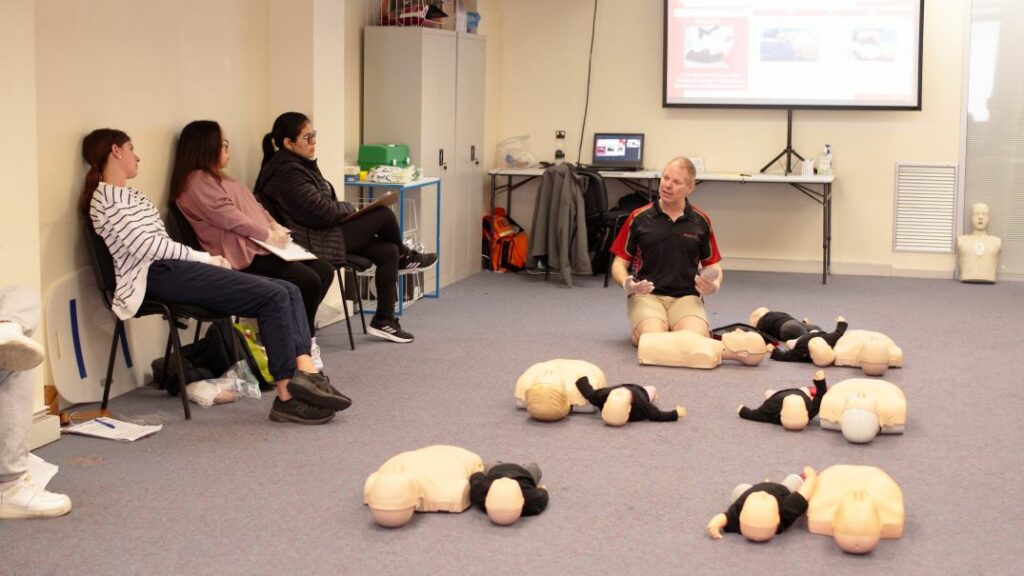Introduction
In today's hectic workplace, ensuring the safety and health of staff members is paramount. Among the important elements of workplace security is the stipulation of Automated External Defibrillators (AEDs). These lifesaving tools are crucial for responding to abrupt heart attacks, which can take place in any type of setting, consisting of work environments. This extensive overview will explore the Workplace AED Needs in Australia, highlighting what every employer needs to know about executing and maintaining AEDs.
Workplace AED Needs in Australia: What Every Employer Needs to Know
Understanding the legal and practical demands bordering AEDs is necessary for all companies in Australia. The Australian Resuscitation Council emphasizes that having an AED on-site can considerably increase survival prices throughout heart emergency situations. Companies must acquaint themselves with their duties under relevant regulations, including the Work Health and Safety Act 2011.

The Value of Having an AED in Your Workplace
Every second matters when it involves a cardiac emergency situation. An AED can be the distinction in between life and death. According to research studies, early defibrillation improves survival rates by as much as 70%. This emphasizes why it's not simply a good concept-- it's a necessity.
Understanding Automated External Defibrillator Clarified Australia
An Automated External Defibrillator (AED) is a mobile device that examines heart rhythm and can send out an electric shock to the heart if necessary. The gadget overviews users via the process with voice prompts and visual directions, making it useful also for individuals with no medical training.
How to Utilize an AED Step by Step Australia
Using an AED entails numerous essential steps:
Assess Responsiveness: Inspect if the person is responsive. Call for Help: Dial emergency services immediately. Retrieve the AED: Obtain the nearby AED. Attach Pads: Comply with layouts on pads for appropriate placement. Analyze Heart Rhythm: The device will evaluate whether a shock is needed. Deliver Shock if Necessary: Guarantee no one is touching the person prior to pushing the shock button. Continue CPR: After providing a shock, proceed CPR till emergency situation solutions arrive.AED and mouth-to-mouth resuscitation Together Australia
affordable CPR courses in Gold CoastCombining mouth-to-mouth resuscitation with an AED boosts survival opportunities significantly. While waiting on an ambulance, carrying out CPR keeps blood distributing, boosting oxygen supply to vital body organs till defibrillation can occur.
AED Usage on Kid Australia
When using an AED on children, special pediatric pads are usually needed. Several contemporary gadgets come outfitted with child-specific settings that adjust energy degrees based upon age or weight criteria.

AED Battery Upkeep Australia
Maintaining your AED includes examining battery status frequently, changing batteries according to manufacturer standards, and making certain pads are not ended or damaged.
Workplace AED Demands Australia
Employers need to guarantee that:
- A suitable number of AEDs are offered based on workplace size and location. Employees have access to training for utilizing the device. Regular upkeep checks are executed according to manufacturer recommendations.
Public AED Locations Australia
Many public spaces now include obtainable AEDs; recognizing where these locations are can conserve lives beyond office settings as well. Neighborhood councils typically keep databases of these locations.
Defibrillator Training Programs Australia
Training courses provide necessary knowledge concerning using defibrillators successfully alongside CPR methods. Organizations like St John Ambulance offer accreditations that furnish workers with lifesaving skills.
Defibrillator Regulation Australia
Legislation bordering defibrillators varies by state however generally mandates particular offices, such as health clubs or aged treatment centers, to have AEDs conveniently offered for use during emergencies.
Choosing Right AED Australia
Selecting a proper design relies on factors such as:
- Intended use (office vs industrial) User-friendliness Availability of pediatric options
Identifying Prospective Disasters in Your Workplace
Employers should carry out risk assessments consistently to determine possible clinical emergencies unique to their atmosphere-- this may include assessing worker wellness risks or ecological dangers influencing emergency situation action protocols.
FAQs
1. What is an Automated Outside Defibrillator?
An Automated External Defibrillator (AED) is a mobile device developed to deal with individuals experiencing abrupt cardiac arrest by supplying an electric shock that helps recover regular heart rhythm.
2. Are there legal requirements for having an AED in my workplace?
Yes, while certain legislation may differ by state or area, numerous areas require offices-- especially those taken into consideration risky-- to have actually access to automated outside defibrillators as part of their emergency treatment provisions.
3. Just how frequently should I check my office's AED?
It's advisable to inspect your workplace's AED a minimum of once a month and after each usage, guaranteeing that batteries are functional and pads are within expiration dates.
4. Can anybody use an AED?
Yes! Modern devices are created for laypeople and supply step-by-step sound instructions; nevertheless, official training is advised for optimum readiness throughout emergencies.
5. What is included in defibrillator training courses?
Courses generally cover just how to operate an AED safely, do CPR properly, recognize signs of heart attack, and respond properly throughout clinical emergencies.
6. Where can I discover public accessibility defibrillators?
Public access defibrillators can be found in various places such as shopping centers, airports, schools, showing off places, and recreation center; neighborhood authorities usually keep maps showing these locations.
Conclusion
Ensuring workplace safety involves more than just compliance; it's about cultivating a culture of preparedness amongst employees concerning wellness emergencies such as cardiac arrests. Implementing efficient plans around Automated External Defibrillators (AEDs) not only boosts your duty of treatment but also reveals commitment towards worker welfare-- a win-win First Aid Training in gold coast situation!
In recap, recognizing the important parts bordering office AED demands in Australia equips employers with understanding necessary for developing safer environments for both efficiency and health among staff members-- because at the end of the day? Everybody is worthy of assurance recognizing they're taken care of!